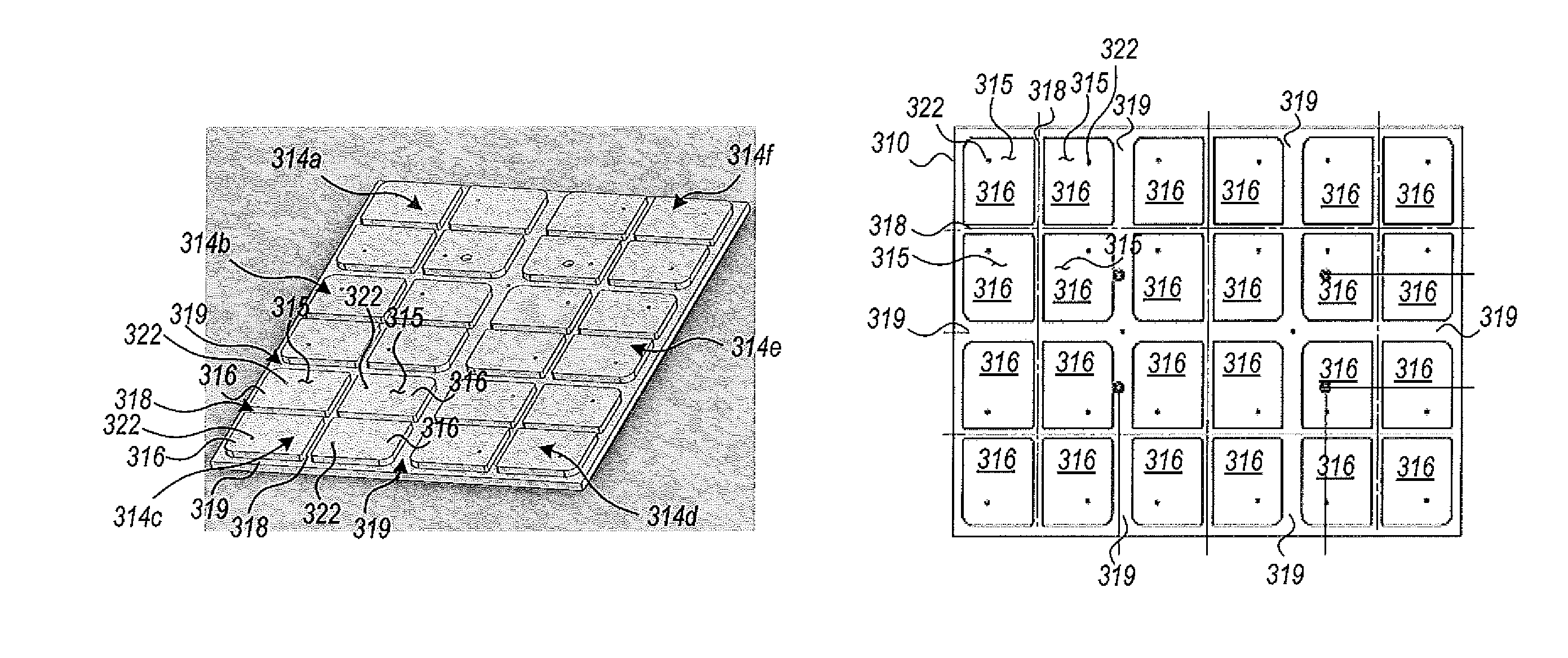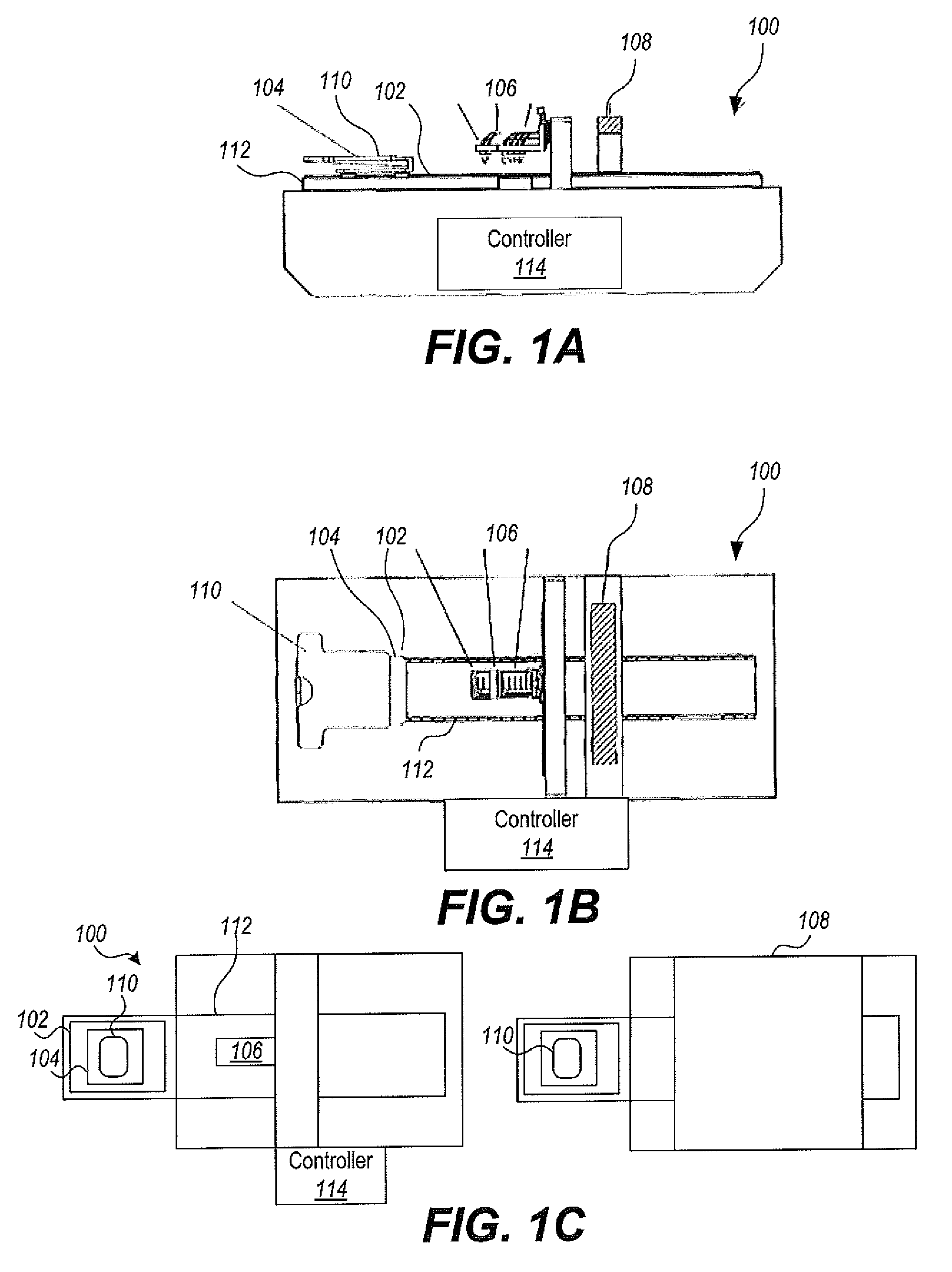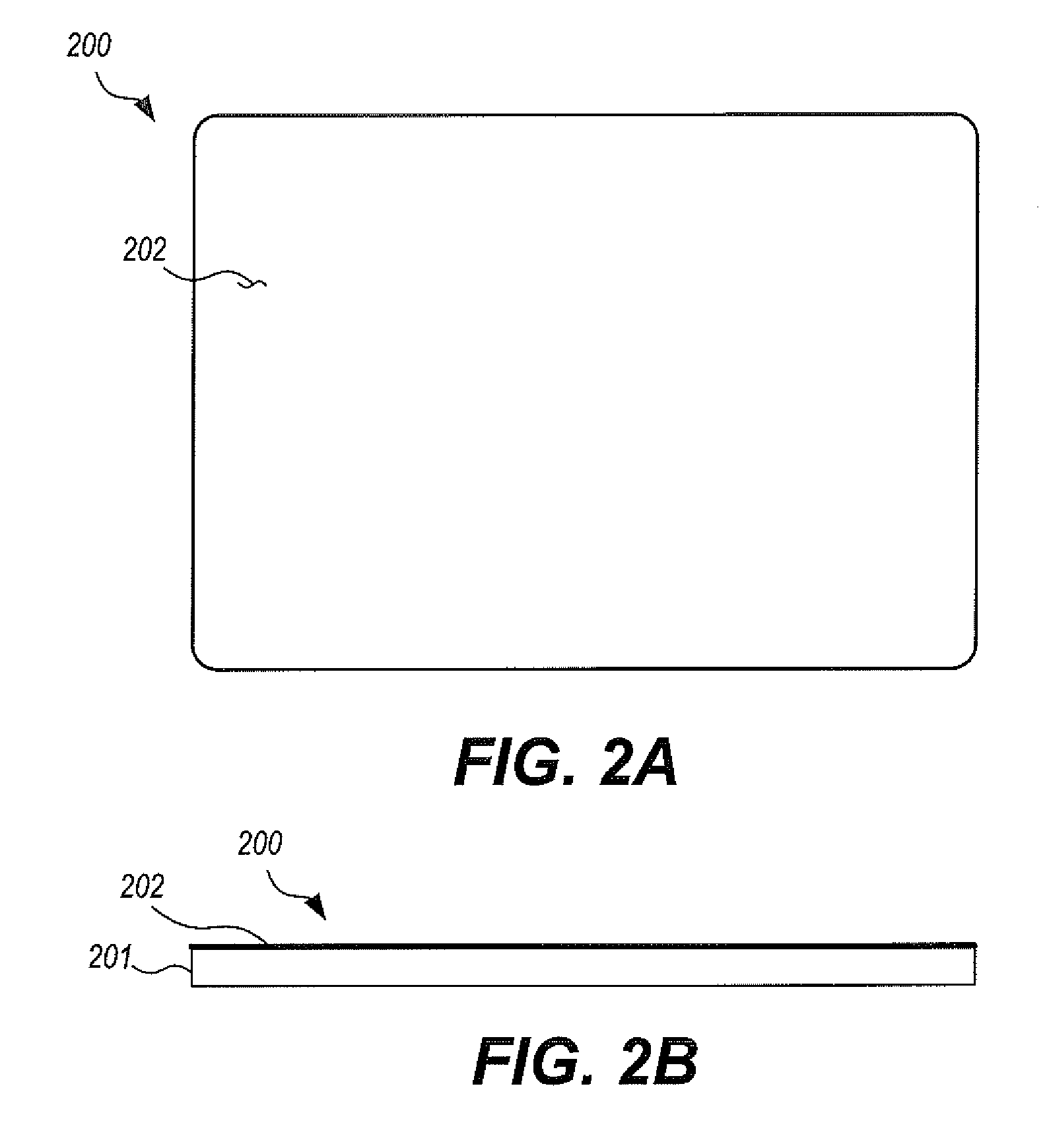Bleed area adjustment technique for use in printing multiple articles of manufacture
a technology of bleed area and adjustment technique, which is applied in the field of simultaneous printing, can solve the problems of misplaced image on the article, transfer of ink or ink dust to subsequent items, and difficulty in precisely positioning the articles of manufacture, so as to reduce the amount of ink used, reduce and adjust the width of the bleed area
- Summary
- Abstract
- Description
- Claims
- Application Information
AI Technical Summary
Benefits of technology
Problems solved by technology
Method used
Image
Examples
Embodiment Construction
[0049]It will be understood that while the discussion herein describes an embodiment of the invention in the field of preparation of customized printed mouse pads, the invention is not so limited and is relevant to preparation and simultaneous printing of multiple articles of manufacture, where the articles of manufacture may be any object capable of being printed on by a printer, and in particular a printer pallet supporting multiple separate articles of manufacture, which may include a removable tray and a positioner for assisting in the precise placement of articles onto the pallet.
[0050]FIGS. 1A and 1B illustrate a digital image printer 100 for printing digital images directly onto an article of manufacture such as a mouse pad. The printer 100 includes a printing table 102 having a pallet 104 mounted thereon for holding an article of manufacture 110. The printer 100 also includes an array of inkjet print heads 106 and a drying unit 108. The printing table 102 is mounted on a con...
PUM
 Login to View More
Login to View More Abstract
Description
Claims
Application Information
 Login to View More
Login to View More - R&D
- Intellectual Property
- Life Sciences
- Materials
- Tech Scout
- Unparalleled Data Quality
- Higher Quality Content
- 60% Fewer Hallucinations
Browse by: Latest US Patents, China's latest patents, Technical Efficacy Thesaurus, Application Domain, Technology Topic, Popular Technical Reports.
© 2025 PatSnap. All rights reserved.Legal|Privacy policy|Modern Slavery Act Transparency Statement|Sitemap|About US| Contact US: help@patsnap.com



